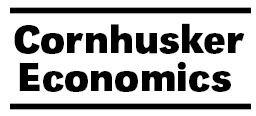Agricultural Economics, Department of

Cornhusker Economics
Date of this Version
10-27-2021
Document Type
Newsletter Issue
Abstract
The U.S. current taxpayer-subsidized crop insurance program represents a culmination of a series of legislative acts, beginning in 1980 with the Federal Crop Insurance Act, followed by the Federal Insurance Reform Act in 1994, and the Agricultural Risk Protection Act (ARPA) in 2000. All acts aimed at encouraging producer participation through increased premium subsidies and enhanced coverage options. Increased subsidization was effective in increasing participation, as more than 90% of corn acres were covered by some form of crop insurance by 2020. For 2021, premium subsidies in Nebraska for all crop insurance policies ranged from just over $36,000 in Hooker County to $10 million in Furnas County, with an average of just under $5 million (to view each county, see the interactive map found here https://public.tableau.com/app/profile/jessica.groskopf/viz/CropInsuranceIndemnity-Subsidy/Sheet2). These subsidies can produce unintended consequences, and the identification of these unintended consequences can be useful to policymakers in rethinking future crop insurance policy design.


Comments
Copyright 2021 University of Nebraska.